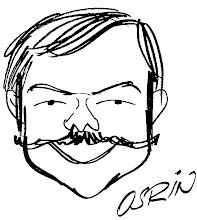Exploring Soglio and Romaggi
Wednesday, September 18
One of our purposes in staying here is to use Cicagna as a base of operations for visits to some of the towns near Cicagna. The couple that links the families on this trip consisted of a Soglio boy, Costantino Lavezzi, and a Romaggi girl, Rosa Raggio. (I use the term "town" with some flexibility. Some of the units I describe as "towns" probably aren't, but some other civic unit.
Before visiting the family churches, though, we had some free time. Noël, Judy, Lew, Kelley, and I took the chance to visit the area around Cinque Terre, a group of villages on the coast. After driving perhaps 40 minutes from Cicagna to the coast, we found ourselves strolling around the seaside in a town called Santa Margherita Legure, where we had lunch at a restaurant branded as Zinco of London. The London connection didn't make it any less authentic, however.
We've been learning that there are several types of dishes served as "misti," which seems to mean "mixed": for example, misti formaggi, which is a cheese plate. Here we tried a fritto misti, which is a plate of mixed fried seafood. We enjoyed it a lot, although we had to get used to eating whole small octopus, looking at a whole shrimp, and wondering just why one would bother to deep-fry a shrimp anyway, when the breading goes on a shell that no one will eat.
After lunch, we rejoined the others at the Church of St. Michael in Soglio. This would have been the church where Costantino was baptized. The population has fallen in this area, and now there are very few families left to carry on, so one views these churches by appointment, and Judy had made an appointment for us to see this St. Michaels's. St. Michael's in Soglio appears not to be used as an active church any more, but it maintains its own kind of rugged beauty. I noted that it has an organ, but evidently the organ hasn't been played within living memory. The lady who let us in told us that it hasn't even been opened in many years.
This is a mountainous area, and the churches, as well as the residences, are built on what might be characterized conservatively as hillsides. From St. Michael's to the churchyard is a scary walk of just a few hundred yards, and we finished up with a walk around the cemetery, visiting the tombs and graves of many Lavezzos. We found Lavezzo graves, but we don't have enough information to know just how they are related to us.
Any Lavezzos from the last 150 years would have been descended from siblings of my great-great-great grandfather GB Lavezzo or even more distant relatives, and presumably those ancestors didn't marry girls with the same surnames as did GB; but I don't believe we know any now living in Soglio. Family lore has it that the Lavezzos emigrated to San Francisco for the Gold Rush, and I do write to Stephen Lavezzo, who is a teacher there.
After our visit to Soglio, we went to a nearby town called Calvari for lunch with Pier Felice Torre, a local genealogist who has been been working with many Italian-American families to piece together their ancestry. Mr. Torre is charming, elegant, and working gamely to recover from a stroke suffered earlier this year. The place we met is called Bar Torre, and he lives across the street.
From Calvari, we went up behind the hills to Romaggi, birthplace of Rosa Raggio, my great-great-grandmother. The church there--another St. Michael's--is the one where she was baptized and where she and Costantino were married. I was invited to look at the campanile, or bell tower, and I walked into its second story, which has to be one of the most uncomfortable and frightening spaces I have ever been in. It has a tiny spiral staircase, rough-cut into stone steps smaller than my feet. Fortunately, the bell-ringer generally didn't have to climb to the top except to make repairs: the bell ropes ran to the first floor through a one-foot hole in the floor.
I also got a look at the organ, which has about one octave of foot pedals, a single manual of perhaps 48 keys, and about six stops. The pipes were encased in a cabinet, and I didn't see them. A crank for operating the bellows extends from the side of the case. I don't know when it was played last, but it's been a while. At least it can be opened, unlike the one in Soglio.
Romaggi only has about 34 residents, so it's surprising that this St. Michael's is still an active worship space. It's also surprising that next door is an excellent trattoria called Pellegrino (which I think means Pilgrim). Italians eat dinner late, so it was pretty close to 10:00 by the time our drivers got to show off their mountain driving skills again.
Soon we were back to La Novellina in Cicagna, ready for the next stage of our adventure tomorrow.


0 Comments:
Post a Comment
<< Home